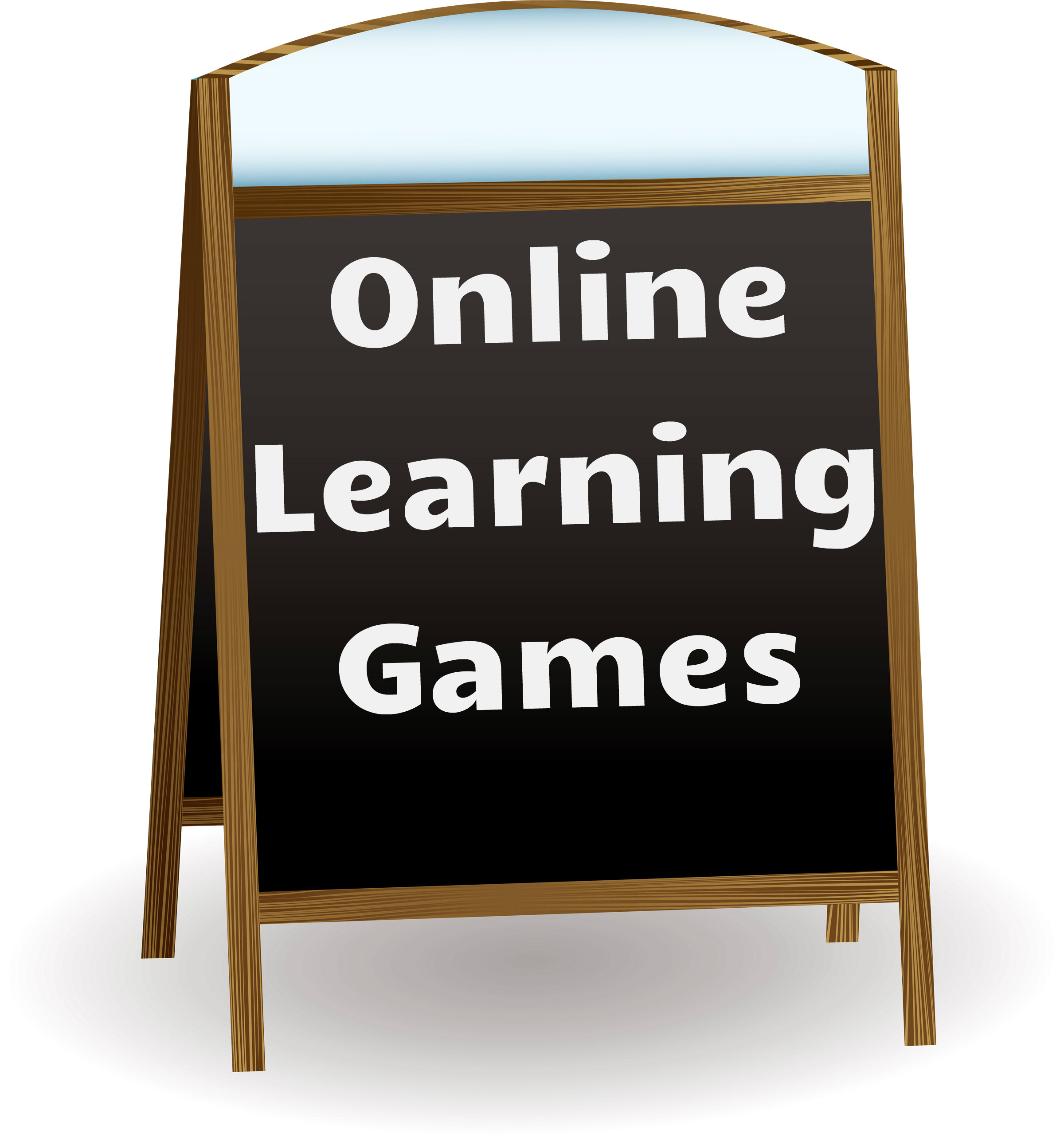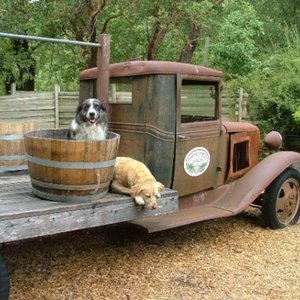

"Teacher, Teacher. Call on me. I know the answer.
This site all in Spanish
This site all in French
I am going to stir up 143 teaching ideas below for you to enjoy. 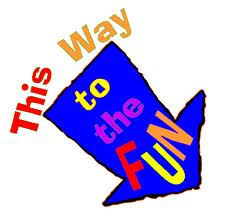







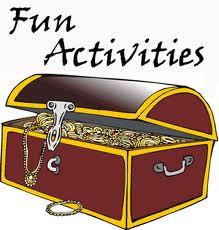

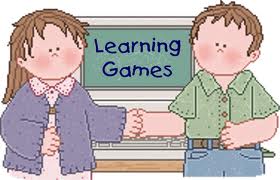
143 fun and enjoyable language learning activities just below.







![]()

 Welcome to the Idea Page for Language Instructors
Welcome to the Idea Page for Language Instructors 



![]()
![]()
![]()





![]()


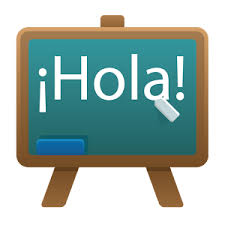



![]() #142 and #143. Check them out. They are NEW.
#142 and #143. Check them out. They are NEW.



![]()



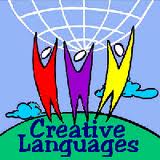







This site all in German
This site all in Chinese
This site all in Italian
This site all in Russian
This site all in Hindi
This site all in Portuguese
This site all in Japanese
This site all in Arabic
This site all in Punjabi
nota bene: These are GOOGLE translations, not mine. jeb



|


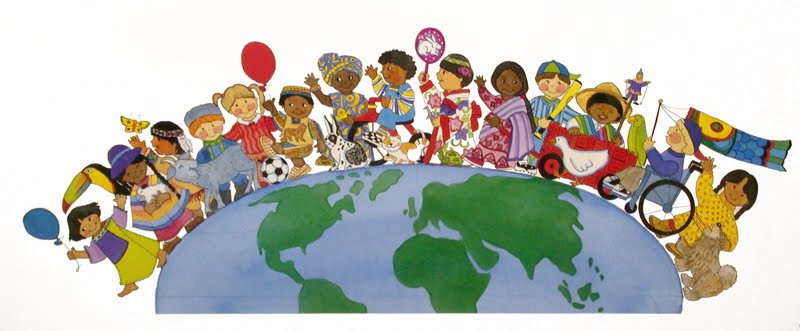

|
Knowledge Without Wisdom is meaningless.





===================================================
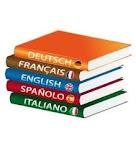

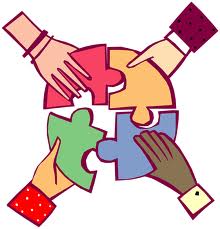

1. Guess: Ask the class - Which word did we use yesterday in class and that I use everyday? Write that word behind a sheet of colored paper on the board. Do this BEFORE the Ss enter the classroom. Go around the room or have students raise their hands. I liked to have one S peek at the word and take my place. They would shake a finger from side to side and say "No, no, no, that's not it!" Or Yes, that's it (in the TL of course). Now let them do the same in pairs and let them choose the word that is used daily. This will give you a good idea of what is happening in your classroom and what they remember well. Now in pairs have Ss guess what the other is thinking using a very common word or phrase used every day in class. Now have a S act out a new verb that you hand them on a sheet of paper. The class guesses.
2. Learning Numbers: Ss are to guess the number you are thinking of. Maybe write that number on a piece of paper first. Ss begin guessing. Your turn your thumb UP to increase the number and DOWN for a lower number. Use one to ten to start. Ss soon learn to start with 5 as it is easier and they can guess the number faster. Then go from ONE to TWENTY. Then ONE to FIFTY. Then do months, days of the week anything in sequence. Hide a number behind a colored sheet of paper on the blackboard. Ss must guess the number. Now use a food, a city, a room, a dessert, a store - almost any word. You are only limited by your own creativity. The key is guessing. I liked to teach my classes how to count to FIVE in several different languages. They loved it, especially younger children (FLES). Using a deck of cards a S pulls out a card. Use only cards with a number on them, no kings, queens, jacks, etc.. The class is to guess the number. The S simply points UP or DOWN to help the class guess the correct number. You can use BINGO cards too. A S puts their finger on a number. Ss ask, it is a "B" an "I", a "N" etc. and then a number until they guess it correctly. Ss are to be able to say: I would like 8 apples. I would like 5 bananas. I would like 2 pears. One S holds up fingers with a number between 1-10 and points to a S. That S then says: I would like (that number) plus a fruit. You must teach the fruit first of course. Then you can go to other items such as pencils, books, notebooks, erasers, etc. This can also be done in pairs.

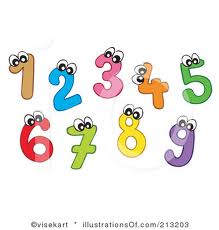



Working in pairs  Two by Two
3. Now do colors: What color I am thinking of. Now in pairs. This can be done with anything like clothing, food, rooms in the house, relatives, animals, the list is endless. The important part is that they are speaking the language and guessing. Start describing an animal with all the physical characteristics you can think of. Ss start raising their hands when they think they know what it is. Continue until ALL hands are up. Just like the activity above, Ss are to say: I would like a RED book. I would like a GREEN pencil. I would like a white HORSE. I would like a BLACK car. etc.
Two by Two
3. Now do colors: What color I am thinking of. Now in pairs. This can be done with anything like clothing, food, rooms in the house, relatives, animals, the list is endless. The important part is that they are speaking the language and guessing. Start describing an animal with all the physical characteristics you can think of. Ss start raising their hands when they think they know what it is. Continue until ALL hands are up. Just like the activity above, Ss are to say: I would like a RED book. I would like a GREEN pencil. I would like a white HORSE. I would like a BLACK car. etc.

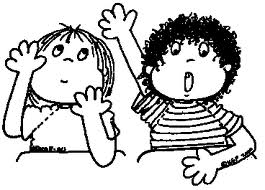
4. Everybody Up: Now focus on having all your students get on their feet at least once every class period. There are endless means to do this. While they are all standing ask if they prefer chocolate ice-cream over vanilla and if so move toward the windows. If they prefer vanilla move toward the door. Chevrolet or Ford? French fries or hamburger? Coke or Pepsi? Movies or TV? IBM or Apple? Red or Yellow? For students who are more advanced, let them come up with the list as an assignment and let them come to the front of the room with their list. If seated you can have them raise their LEFT hand for one response and their RIGHT hand for the other. If you have a large classroom put all the chairs off to one side. Ss are to either go left or right as to their feelings about something you say. Do you like to go the beach? (Yes to the Left, No to the Right) Do you prefer Ford or Chevrolet (Ford to the left, Chevy to the right), The Bulls or the Heat? Denver or Chicago? Green or Red? The list is endless.

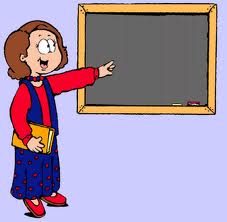

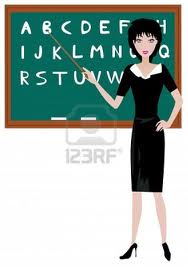
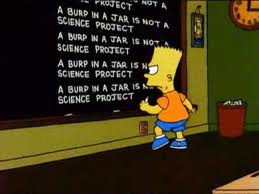
5. Everyone to the blackboard: If there is not enough space, have the rest of the class draw on paper at their desk. Now say something like - Draw a river. Over the river draw a bridge. On the bridge there are three people, a man, two women and a huge dog. The dog has a book in his mouth. The man is fishing. The women are both looking upwards as their is an airplane overhead. The man has a tiny fish on his line. The sun is in the sky and on and on. This can be kept very simple in 1st year and more detailed for more advanced classes. The Ss love to see how and what the others have drawn. Best yet, let a S be the teacher. They first must have a drawing and give the details in the target language. I liked to use an overhead transparency with all the examples and at the end everyone can see your drawing to compare with theirs. Send a transparency home with a couple of students with colored pens and have them dictate to the class their images. FUN! If you have a "gifted" S, let him or her have the entire class draw what they describe. Sometimes it is best to have that S come with a drawing already made that you can approve of prior to the exercise. Go for lots of details in the drawing. New one here - A S starts to draw something on the board and the class has to guess what it is. The S who gets two right gets to take their place and draw.You will need some kind of a S judge to decide who won. You may have to give them a list of what to draw for early years.

6. "Drill Em": Ask for a volunteer. You the teacher ask a whole series of simple questions that focus on what they are presently learning. Examples might be the family, yourself, etc. What is your name? They respond in the target language (TL). How old are you? What is your father's name? Do you have a brother or a sister? What is his/her name? Do you have a dog? What is his name? What color is he? Again, keep it simple for 1st year Ss and more challenging for the upper levels. What time is it? What is my name? Do you have a car? Do you drive to school? Etc., etc. etc. Later let the Ss in the classroom do the questioning. I always had a tall stool front and center that the S sat on to be questioned. Some classes like it when the T asks all the questions in rapid succession. Here is a real twist. The S responds always with the word BANANA in the TL for any question. They have to say BANANA without smiling or laughing. This is really fun and won't last long for most Ss.

7. It's in MY head: The T says "I am thinking of a large city in (name the country of your language). What is it?" Guess! A river. A mountain range. A province. A monument. Etc. Now let the Ss do this in pairs. It has to be in categories like fruit, colors, days, months, veggies, cars, school subjects., etc.

8. Keep 'Em Talking: This is one of my favorite speaking activities for Ss. Here each S is challenged to speak the TL for 30 seconds without stopping. They can not use numbers sequences, the alphabet, etc. and they can say anything they want just as long as it is in the TL. Now pair up. Have a S look at the clock (or their watch) and let the other S know when 30 seconds are up. Teach: GO and STOP in the TL and have the Ss use both. Now speak the TL for one full minute. Now the ultimate, no limit. You should have a stopwatch for this one. See the track coach and borrow one or ask a S to bring one to class. I once had a 1st year student (late in the year) talk for 20 minutes without stopping. If a S hesitates for more than 5 seconds, he/she is DONE. (Appoint a S as a judge on the 5 second rule) He described everything and everyone he could think of and all in the TL, in this case French. He described everyone he ever met, everything he every saw, what he ate this AM, what foods he liked, naming each teaching in all his courses, in short, everything he could think of! Great job he did! It challenged all the other Ss to see what they could do as well. You can try this with a triad firing Qs at a fourth S as quickly as they can think of a Q. Go around in a circle to keep in moving along. If a S does not have a Q, they simply shakes their head and it continues.

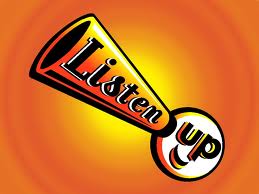

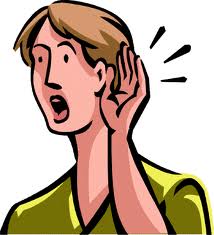
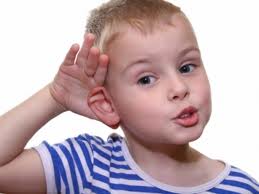
9. Listen very carefully: Start spelling an easy word in the TL: The first S who knows the word raises their hand. Don't be the judge. Let a volunteer student be your judge. Now let a S spell a word in your place in front of the class. The class guesses. Now pair up and do the same. They can use their books if they need to. Now do this in pairs. A S can use a vocabulary list is they want. You can also do this in triads a their is a little more competition, but let the S do it. NEW ONE HERE - The Ss are to read your lips for a word or a phrase. Then have a S do it in your place. Then do it in pairs. FUN.

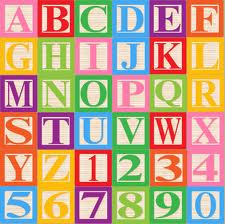




Last night
 and tomorrow
and tomorrow11. The Alibi: This one is for the more advanced class: A crime was committed last night. Two Ss s need an alibi - where they were, what time it was, what they did, what they were wearing, who they saw etc. They go out in the hallway and may up their alibi. One S comes back, sits on the stool and the class asks 20 questions in the TL and NO MORE. Ask a S to keep track of the Qs. Where did you go? Who did you go with? What time was it? What were you wearing? Who did you see there? Who drove? What kind of car? What color was the car? What was the name of the movie? Etc. Etc. S1 goes back out into the hallway and sits. Now S2 comes in, sits on the same stool and the class asks the same questions. Ss raise their hands to ask a Q and the S simply nods their head to that S. At the end both Ss sit in the hall as the class decides whether they are guilty or not guilty (by a raising of hands). Teach each of those phrases in the TL. Good use of the past tenses too. Some Ss can really get good at alibis with lots of details in a short time. Give them only a specified time like three or four minutes for preparing their alibi. This is a great activity. Hopefully they will want to do it often.

12.Time for skits: Skits are FUN. They allow your Ss to be creative. They can be done in pairs or in small groups. Set the scene. This must be done or there can be chaos. DO NOT say make up a skit. Be specific on content. For instance, you are to decide where you want to go tonight and at what time. What you are going to wear. Who you want to invite, etc. You may also invite creativity and ask small groups (3-4) Ss to go out in the hallway and prepare their skit there or scatter around the room. Each skit is to use words that are being presently learning in class. You must always set the scene first. Try to do skits often.

13. Yes Mom, Yes Dad: A S is the father or the mother. The other S is the son/daughter. The parent is asking questions about last night? Where were you? What did you do? What time? Etc. NEW ONE HERE - Now do it IN CLASS with cell phones with the speakers on.

14. Who is studying what?: Guess the name of one of the courses their partner is studying. Keep changing the name of the course. Now put a S on the stool and the whole class guesses. Guess which one is his/her favorite course. Be sure that the Ss know how to say the various courses/subjects like chemistry, history, math and so forth.




15. Gestures: Teach gestures in the country where the language is spoken. Have a volunteer S sit on the stool as another S gives the phrase or word for a particular gesture. The S on the stool gives the gesture. I'm hungry (rubs his/her belly). I don't know? (shrugs shoulders w/hands in the air) I don't understand. (shakes finger). I am bored. I can't believe it. I am thirsty. Etc. There must be dozens of actions that can be acted out such as I'm hungry, I have a headache. I am tired. I am upset. I am thirsty. etc.

16. Family names: A S goes through his/her entire family giving their names. My dad's name is. My brother's name is. My uncle's name is. My grandfather's name is. etc. Then the class asks. what's you uncle's name? what's your sister's name? Etc. Then he/she asks the class, what's the name of my mother / father / grandfather. Ss have to pay attention here to respond. Now in pairs one S ask the other "What the name of your uncle?" Your aunt? Your cousins? Your sister/brother? Your grandfather? Etc.


 17. Add on and on: Almost any words can be used here but you start the round. Ss are seated in a circle. Verbs work well. You say TO SING. S1 says TO SING, TO SPEAK. S2 says TO SING, TO SPEAK, TO EAT. This goes all around the room until it fails. Adjectives are great. Numbers out of order work well like 16, 32, 64, 49, 100 etc. This requires some good listening skills plus memory skills. Animals. Body parts. Countries. The list goes one and on. Get the idea? Now go for it and have fun. This can be done in rows as well.
17. Add on and on: Almost any words can be used here but you start the round. Ss are seated in a circle. Verbs work well. You say TO SING. S1 says TO SING, TO SPEAK. S2 says TO SING, TO SPEAK, TO EAT. This goes all around the room until it fails. Adjectives are great. Numbers out of order work well like 16, 32, 64, 49, 100 etc. This requires some good listening skills plus memory skills. Animals. Body parts. Countries. The list goes one and on. Get the idea? Now go for it and have fun. This can be done in rows as well.



18. Food: Many schools do not allow Ts to prepare food or eat in the classroom. Mine did and we ate various kinds of native foods and often. I had two crepe-makers ready to go. I would give a Ss the recipe the day before as the batter has to sit in a refrigerator overnight or it is not good. We also had Salade Niçoise. Ss were asked to bring the ingredients. Inevitably someone would forget the lettuce or the tomatoes or something else. That's why a small refrigerator in your office comes in handy for those items that you have to have to make the dish work. Taking a crepe down to the principal's office also kept him very happy, especially with chocolate sauce on top. You can use a wide variety of toppings with pie fillings working best. Often Ss would volunteer to bring in some dish that was made a home that was a native dish that most often mom prepared for us. Ask Ss to bring in paper plates and plastic forks. Keep extras in your classroom. Sometimes parents are very good as preparing food for your classes. New one here - Ss bring photos of food clipped from a food magazine.The class is to tell what the food is.

BINGO! I won!
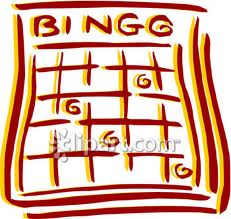 Great for review and practice.
Great for review and practice.19. Let's play BINGO: Play BINGO in class as it is a great means to hone in on numbers. Put a student at the blackboard and have him/her write down the number after you say it aloud twice. Only twice. Later Ss review all those numbers on the board. Now have Ss subtract one number from what they see, then add one, then add five, subtract ten, etc. Goes on and on. Teach the expression I WON in the TL. Have students make up the Bingo cards themselves. New one here - Ss play a game that they bring from home, but it has to be done all in the TL.

20. Commands: Be sure to teach all the necessary commands and responses early on in the beginner class. My goal was to always have my Level I classes all in the TL by Christmas. I always managed to do so my Thanksgiving. Example: Repeat! I don't understand! Again please! Very good! And of course - How do you say & What does that mean?

21. Common Greetings: Teach all the common greetings early on. Hello. Good-bye. See you tomorrow. See you later. Good evening, Good afternoon, How are you? I am fine. I am tired. I am sick. Where is? Where are? There is and There is. I am hungry and many others that they will want to know and need to know to become fluent.

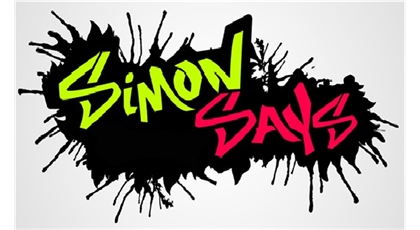
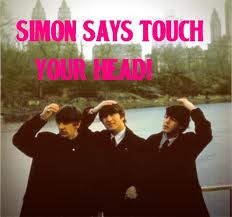
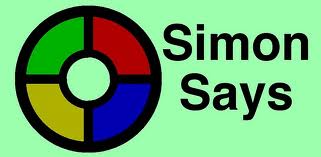
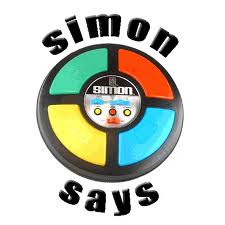
22. Simon Says: Simon Says is great for body parts: Play the game Simon Says Touch your ... . The Ss respond simply by touching that part of the body. When you say Touch your (body part) without Simon Says, they are out/done/through. Have a S be the judge on this, not you. You will find that all the other Ss will also be the judge and will take note. Now have a S do it instead of you in front of the class. They pair up and do the same thing. Pairs work great for just about everything. Do this standing. They sit far too long anyway. Do as much as you can as Ss stand. Now do this in pairs. New one here - Now with their eyes closed play Simon Says.

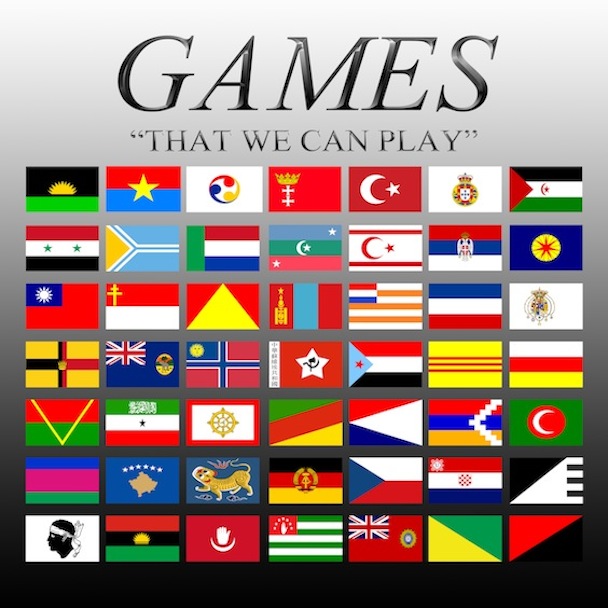
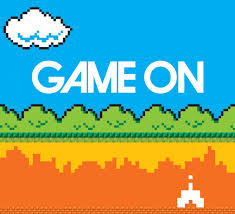
23. Games and Game Sites on the Web: There are many game sites on my language websites @ http://www.uni.edu/becker Encourage your Ss to use this FL site for practice at home. There are many very creative and neat game sites and many with sound, especially the French site as I used a Smartboard daily with these fun activities.


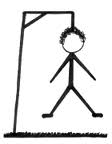


25. Fruits and Vegetables: Teaching fruits and vegetable: Mention a fruit. Go around the room. Ss are to say."I like .." or "I don't like ..." Now let a S be the T in front of the classroom. Then let the other Ss name fruits and vegetable at a volunteer on the stool. They have to respond in kind. In a circle: S1 today I am going to eat an apple. S2 Today I am going to eat and apple and a pear. S3 Today I am going to eat an apple, a pear and a banana. See how far you can go around the room. This can be done in rows but by now you know how much I enjoy the class in a circle. A S draws a picture of a fruit or vegetable on the board. The class guesses. Now in pairs. Use plastic fruits and vegetables that Ss have at home or borrow some. Put a bunch of plastic fruit and vegetable in a paper bag. You reach in and touch one. The Ss must guess what you have in you hand.

26. I like or I don't like: You can do the same with sports, drinks, major league teams and only your creativity will limit you on the topics.A S says one thing they like and one they don't like aloud. After you go around the room, ask: What does John like? What does Sue not like? to see if the class can remember. Fun.

27. The four cardinal points: Teach directions: Simply point in that direction and the Ss respond with the answer. Now do it in pairs. Use True or False by saying - "that's north" by pointing south. Ss respond with no, that's north. Now let a S take your place and do the same. Now let a S do it. I always felt that anything a S can do that I'm doing, let them do it as I already speak the language.

28. Clothing: A S draws a clothing item on the board. The class responds with the answer. Now the Ss tell the S at the board what to draw. Draw a ---- . It's getting them on their feet, remember? Now ask "Who in here today is wearing a red shirt? a blue sweater? black shoes? Etc. A S stands and the person next to them describes what that S is wearing as well as the color. Mike is wearing a red shirt, black shoes, blue jeans and purple socks. Mary is wearing a white skirt, an orange blouse, white shoes and green socks.

29. Let's learn the weather: The same as above. I like to do it simply with gestures. Cover you ears and it's cold outside. I wipe off sweat and "it's hot" etc. Make a snowball. Raise an umbrella. A S tells another S to draw a weather expression on the board. They become quite funny at times. Teach a whole bunch of weather expressions like foggy, hazy, drizzle, tornado, hurricane, freezing, etc.

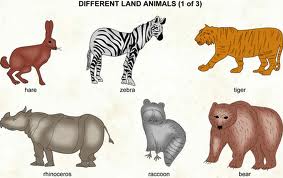

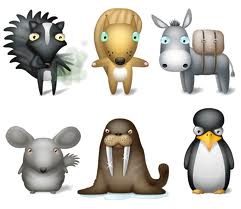
30. What was that animal?: After you teach animals a S makes the sound of an animal. The class responds. A S draws a picture of animal on the board. The class responds. The S acts like this animal. The class responds. This is often pretty funny as not everyone is an actor. Now try doing this with just motions. The S "draws" a cat with his/her hand. A cow (like they are milking), riding a horse, making the sound of a pig, having a long trunk, etc. FUN FUN!
Variation #1: My kids love to play this game. I must admit that it worked even better when I was single because my maiden name was McDonald. I call this "Old McDonald's Farm". I tape a piece of paper to each desk that has an animal written in English on it. When we are ready to begin the review, I ask the students to look at their papers but not to share the information with others. Some students have the same animal. When I, Old McDonald, call out the animal in French, all of the students who are that animal must make the sound. We exchange papers and keep playing as long as we need to review. At the end of the game I ask to hear from all animals at the same time and Old McDonald's farm really comes to life. I hope you can use this and that your students will enjoy it as much as mine.
Thanks to: Debra Welch, Hephzibah High School, Hephzibah, Georgia.

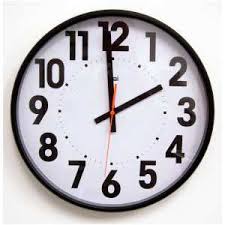



31. Telling Time: Hopefully you have a clock with moveable hands. If not make one out of paper, better yet ask a S to make one for you. You can get a lot of mileage out of a clock. You say the time and a S turns the dial to the correct time. Then that S changes the clock and asks another S to tell what time it is. You set the clock and hold it so that the Ss can not see it. Ss guess the time. Point your finger up for less and down for more. Ask often during class - What time is it now? I always liked those close that have hands that turn easily. Have a S simply spin the wheels and see where it ends up and tell you the time. Then he or she chooses another S to do the same. Then send it on to the class to tell you the "mixed up time. You say a time like 1:25. The Ss must add ten minutes to what you say or five minutes or subtract ten minutes. Keep them easy. The idea is to practice telling time. Here's a NEW WRINKLE. Have them guess the time you have on your small clock behind your back. You simply point up or down closer to the right time until someone gets it. Now do it in pairs. FUN

32.So what do you have on today?: T asks what are you wearing today?: S = Today I am wearing - names all his or her clothing. Now ask students to ask if he or she is wearing a ____. It is a yes or no response. Yes, I am wearing a ---- or no, I'm not wearing a ----. You might also have them touch the clothing and say - This is my --- so that the gender is correct. Now ask "Who in here is wearing a (give the article of clothing plus maybe the color)?"
Variation #1: Ss are to make a paper doll and paste on clothing cut from a magazine. Then to are to tell the class what he/she is wearing plus the color.



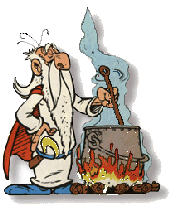


He is stirring up some great new questions just for you.
33. Questioning: T points to a photo and asks is this a ...?" S responds with, yes, it is a .. or no. it is not a ... . Have posters all around the classroom of the countries your are studying. Write the national tourist association of the country and tell them what you are doing or else just buy a few.

34. Great Guessing Game: Ss are to act out a scene. The T has a list and shows one to a S who pretends to be -- "Watching TV", "Swimming", "Eating a Big Mac" or "Reading a book." The list is endless. That S chooses another S to play now.

35. National Anthems: Listen to the National Anthem. Teach the words and then have a sing along. Your goal should be to have all your Ss memorize the anthem.

Give me a call.
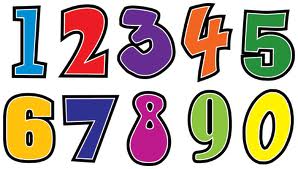 Call a friend. What's their number?
Call a friend. What's their number?
36. Telephone Numbers: Have the student give you their phone number in the TL. You write it on the board. Now have that student come to the board who asks another S for their number and writes it on the board. Etc. Now you give some numbers between one and a hundred. Volunteers (3 o 4) at the board. Everyone writes it down on a piece of paper at their desk. Compare answers. Give a number and they must subtract ten, five, one or add the same to that number. Encourage your students to call each and to speak in the TL.

37. Classroom objects: Walk around the classroom touching or point and asking - "What is this?" or "Where is the ---?" You might just say the word and ask for S to rise and touch it and say. Here is the ---.

38. Maps: Hopefully you have a nice map of the FL country in your classroom. If not draw one on the board. Point out where the major cities are located (write them in) along with rivers, mountains and surrounding countries. Now ask Ss to do it at their desks and erase the map. Ask what language is spoken in the bordering country/countries. Give an assignment that requires Ss to bring to class a nice map of a country. Post them all on the wall with Ss names. Have your Ss draw a map at home and label the cities, mountains, rivers, etc. Use color. Post them all on the bulletin board. Be sure names (in the TL) are on each. Maybe even put them up in the hallway outside the door of your classroom so that other Ss in the building can see them and see that you are having FUN!

Repeat after me...
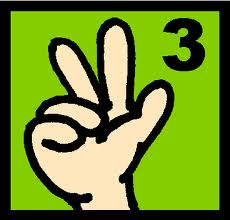
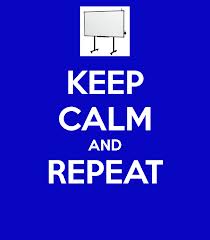
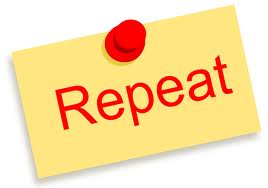
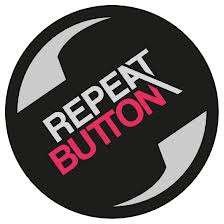
39. Repeat after me: Tell your Ss that you are going to hold up two, three or four fingers for the number of times you want something repeated. This is crucial early on for saying the TL correctly. Repeating three times in a row is good practice. Bend a finger down each time you hear the word or phrase. You may want to go around the room and have each S say a word or an expression. Do this quickly and listen for errors. Errors are lessons in wisdom, right? Now you will know what to work on.

40. High frequency vocabulary: Find the high frequency list of the most used words in the TL you teach. I suggest that you print out a list for each S of maybe 50 of them. In a circle you say a word in the TL or a phrase. You point to a S who repeats that word or phrase. Now that S points to another or says the name of a S who repeats it. Do this maybe five or six times only. Listen for errors that you can correct later. Suggest that your Ss go to Google and find word lists in the TL. Write down new words. Have Ss write a new word on the board each day but it must be a high frequency word. I have always said that I did not care of my Ss knew the word for DUST until the fifth year. Well, maybe after their fourth year.

41. The Box: You have a pencil. You tell the student to put the pencil -- in the box, behind the box, in front of the box, near the box, far from the box, on the box. Now ask, where is the pencil. mix it up. Response. It is IN the box, On the box, Next to the box, etc. You place an item in a box. The class must guess its attribute --- is it yellow? It is hard? Is it something to wear? Is it something to eat? Can you write with it? Etc. This has to be for upper level Ss but works very well. Now let a S be the T and respond to the questions.

42. The Conditional Tense: Ss are to tell you something they would like to to. i.e. I would like (use a verb to start), then a noun. Do not ask WHY? That is not a good a question until later years for a good response.

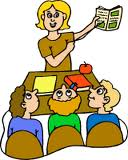

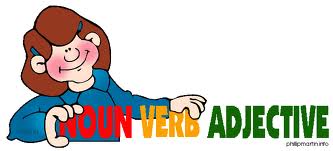
43. To the store: S #1 - I went to the store. I bought an apple. S2 I went to the store. I bought an apple and an orange. S3 I went to the store. I bought an apple, an orange and a potato. Go on and one until it runs out. You can use this activity with many many nouns and verbs. Tomorrow I would like to swim. Tomorrow I would like to swim and dance. Add more and more verbs. This can be done in pairs as well. See who can come up with the longest sentence. Verbs work very well here. Tomorrow I am going TO SWIM. Tomorrow I am going to SWIM and to SING. Etc.

44. Tomorrow and the Future tense: For use of the future tense. S1: Tomorrow I am going to go to school. S2: Tomorrow I am going to go to school and eat in the cafeteria. S3. etc. Add ons. Maybe just ask Ss to tell three things they are going to do tonight / tomorrow / next week / next year etc. Be sure to use tomorrow I will + verb not just I am going to + verb.

45. Describe yourself: Ss are to tell their age, where you live, the classes they are studying, what they like to do, what they like to eat, where they like to go and lots of other things. Now challenge the class to repeat what was said. He is 15 years old. He lives in, he is studying, he likes to, he likes to eat... etc.



47. I don't like: Tell me three things you don't like. S = I don't like spinach. I don't like to study chemistry. I don't like to watch boxing matches. I don't like bad weather. I don't like snow. I don't like to swim in cold water. The possibilities are endless and there are no right answers. Let's see if the others were listening. Ask what does (name of S) not like. Do several of these. Have a S ask that question instead of you. I always believed that if a S could do what I am doing, let them do it as I already know how.

48. Weather expressions: T = What weather expression am I thinking of? They guess until they get the right one. Now act out that weather expression. Hold up an umbrella. Make a snowball and throw it. Pretend that you are freezing. Now you are sweating and wiping your forehead. Etc.


49. More guessing: You can use the above guessing technique with literally dozens of categories. What color? What food? What building? What country? What language? What room in the house? Etc. Again, do it in pairs. They love being left alone to work by themselves having fun in the TL. It us usually the same Ss who work together all the time. Do mix it up. Have them choose a different partner.

50. When I was young: Good use of the imperfect and conditional verb tenses. When I was young I used to .. I would ... My family and I used to .. Have Ss ask each other - When you were young did you ---? or as a T have them raise their hands when you ask --- When you were young did you celebrate Christmas at a relative's house? Did your family go on a vacation together? Did you ever ride a horse? Did you not like to eat spinach? Did you like school? Etc. Etc.

51. Look over there Mom: A S is with their mother. They see an animal. They shout out. Look mom, there's a white rabbit or a red cow or a brown horse or a grey elephant. Go around the room and have each S give an animal with a color. Yes, they may repeat or say two animals or three. Teach the animal list first and lots of them. Maybe even write a list on the board with pictures you draw. Now have several Ss come to the board and draw the animal you say. Make it a race. This is fun as some Ss draw in funny ways. A good laugh is part of enjoying learning the language. Now let's go to the Zoo and do the same exercise with all wild animals. Now have your Ss draw a food item / a dessert / a means of transportation / an item of clothing - in short, anything that can be put into a list that they have already learned. Now try it blindfolded.

52. Downtown: A S is in town. He or she is going to several stores in a row. Do this in a circle around the room. Do form circles occasionally to break up the routine of rows in your classroom. You start off by saying. S#1 - I am going downtown. I am going to visit a butcher shop. S2 says. I'm going downtown too. I am going to visit a butcher shop and a bakery. Continue on while adding more stores until Ss can no longer come up with the long list. Stop here and have the entire class in unison repeat the list where it stopped. Fun. The T says the name of a store and the Ss draw a picture of what you would find in that store. Bread. Meat. Aspirin. Hamburger (McDonalds), etc.




53. Hide and Seek: Occasionally put three words on behind colored sheets of paper attached to board with masking tape. Place a large question mark on each one. Have a S come up and peak behind the sheet with a word on it then he/she gives a hint such as -- It's an animal. Ss raise their hands and S1 responds with. No, it's not a ..(cat). etc. until someone guesses it. Then that S who guesses correctly comes to the board and does the same thing with sheet No 2. You can use unlimited categories such as verbs, colors, months, clothing, fruit, vegetable. anything. Fun. Tomorrow let a S choose the words behind the sheet and everyone. Include yourself in the guessing. Guess with them. They like that. The fact that T does not know either.

54. The Big House: Draw a large house on the blackboard. Label all the rooms. Include a garage and an attic. You can do this with an overhead transparency at home as well. Ask - Where is your father. S1 - My father is in the garage or My father is in the kitchen or My father is in the living room. You might want to whisper the correct answer into the ear of a S who becomes the judge. She/he can respond instead of you with. No, he is not in the garage, kitchen, living room.etc. Or yes, he is in the -. Now do grandma and an uncle and a sister or your dog, etc. You can even teach my step-brother of sister or step-father or mother as we see a lot of that today. This can be done with all kinds of categories like stores in town, cities in the country of the TL you teach, etc. Fun. Now put a small cut-out of a dog and place it in a room on the overhead transparency with the bulb off. The Ss are to guess in which room the dog is found. Now make it a cat. Your father. Mother. A book, etc. The choices are limitless. Now let a S take your place and place the small cut-out in a different room. The other Ss guess and the S at the transparency responds with, "No, that is not right." or "Yes, that is correct." Now turn on the bulb.

 My mother's name is ---
My mother's name is ---55. My family: Students should be able to tell you the names of all their relatives. My father's name is .. My mother's name is . My brother's name is, etc. This should be done in front of the class. Now put a S on the stool. The class asks, What's your father's name? What is the name of your grandmother? Etc. Then that S selects someone to take their place after Ss raise their hands to be called upon. Fun. Now have a S try to repeat the names of the other S's relatives (as many as s/he can remember).

56. Close your eyes now: After Ss know the name of body parts call for a volunteer and again, on the omnipresent stool. The S is to touch a body part and name it WITH EYES CLOSED. Here is my head. Here are my ears. Here is my nose. etc. Then Ss ask S1 (with eyes closed yet), where are your feet? S = Here are my feet (with eyes closed). Where are your arms? Here are my arms. Etc. Good use of possessive adjectives too. The whole class is to close their eyes or put their head on their desks with eyes closed. A S touches a part of his/her body and asks "What is this?" Ss raise their hands and try to guess. It that your ? until they guess it correct.


57. Drawing challenge: Call for volunteers (3 or 4) to the board. They are to draw body parts. T = Draw two arms. Draw two feet. Draw two ears. Draw three mouths. Draw four eyes. Draw a small head. Draw a finger. Draw six fingers. Etc. You may have Ss at their desks to the same or just enjoy watching the others do their drawings which will always come out funny. Fun. Three or four Ss at the board. You the T tell them all to draw a woman with three heads. One has lots of hair and the other two has a hat on their head. Two of them have three eyes and one has only one eye. Each of them have very tiny ears. Go on and on and be creative here. Ss at their desks can draw the same on a sheet of paper. New one here - Ss make up their own signs in the TL to hang on the wall of the classroom.

58.Let's learn some more verbs: I always told me Ss that Verbs are the Skeleton of the language and the Vocabulary the Skin. You have to have a strong group of bones to hold up the skin. Work on those verbs. Have a list of the most used verbs in your language from GOOGLE. Work with your Ss to expand that list daily. New verb of the day works. Maybe a small slot board poster with the new verbs. Don't erase the one from yesterday. Add to the list and be sure to use them. Use only "useful" verbs. I alway said that I did not care if my students knew the word for "dust" until the seventeenth year. It is also important to have a list of the most used vocabulary words in the TL. Again work daily with your Ss to master and expand this list available online. Verbs are NO USE unless you can use them properly. Go to the new list daily and be sure that Ss know the meaning and how to use that verb. Now call for Ss to raise their hand and use that verb correctly in a sentence. Not just I swim --- But I swim everyday in a swimming pool. Not I brush my teeth -- But I brush my teeth everyday in the bathroom. Try always to have Ss expand the sentences they say by adding words. Encourage them. Give praise when they add words. Make suggestions. For twenty seconds Ss are to write as many verbs as they can think of. The two winners (by number) are to write their list on the board. Give them a reward like a piece of candy, a Toosie Roll, or a stick of gum. Something / Anything.


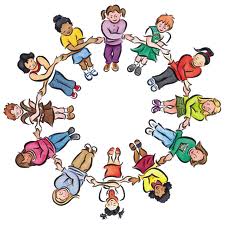

59. Keep "Em Guessing: Ask Ss, in what month is "My Birthday?" (Yes, your own!) They guess. Now in what month is my wife's/husband's/friend's birthday. Now, S1 asks the class "In what month is my birthday?" Suggest that they point with their finger upward for a month closer to January and downward for December. It speeds things up. You can go around the room (in circles remember?) Now do it in pairs. Circles work great as all the Ss can see each other otherwise they only see the back of heads of Ss in front of them. Teach them in the TL, Let's form a circle today. Let's put the chair back in rows in the TL. Now Ss are to guess the month of each S's birthday. No cheating. Ex. Is it in March? No, it is not in March. Is it in November. Yes, that's correct. etc. Go around the room with the answers until one S guesses correctly.

60. The House Furnishings: Give a transparency to one of your Ss who likes to draw. Ask that a variety of furniture be on that transparency that s/he takes home. Use a variety of colored pens. Have your class name all the pieces of the furnishings as you point to each one. Another transparency with a home fully furnished. Now ask. Where is the sofa? The sofa is in the living room. T = Where is the bed? S = The bed is in the bedroom. Now let a S be the T. Where is the ? and Ss raise their hands to answer. Draw an entire house with furnishing on a transparency or let a S do it at home. Now have them guess - Where is your father? Where is your dog? Where is -- mix it up. Now ask 3-4 student volunteers to go to the board. Draw a chair. Draw a lamp. Draw a fireplace. etc. Ss at the board. T describes a house with furniture in each room and Ss draw each. Sometimes it can be two tables, three TVs, two cars, a birdcage, etc. Fun. NOW each S is to be in a room. In pairs S1 is to guess which room S2 is in.

Time to learn to count. 



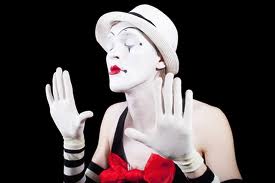
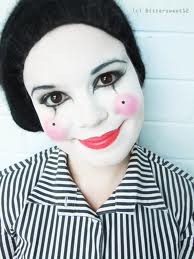
62. Mime: Mime is fun. T asks. What am I doing? Ss.. You are playing piano. You are washing your face. You are eating. You are brushing your teeth. You are waking up. Dozen and dozens of possibilities. Now in pairs. This is good for reflexive verbs. I'm am getting up. I am going to bed. I'm brushing my teeth. I am combing my hair. I am playing a sax. I am watching TV. The list is endless. I like endless lists! Now ask for a volunteer. The rest of the class tells this S what to do and they act it out silently in mime. Reflexive verbs are best but anything works. Wash your hands. Comb your hair. Sit down. Shake the Ts hand. etc.

63. I just love to --: Ask Ss what they love to do. I love to ... I love to .. Go around the room. Now ask Ss what a particular student likes to do. Now ask the class --- What does Sam like to do? What does Sally like to do? What does --- etc.? Answers in unison. What do you NOT like to do? Have the S raise their hands and tell the class. I don't like to go to bed early. I don't like to eat spinach. I don't like to take tests. Etc.

64. I don't like to --: Same as above. but this time I don't like to ... Go around the room. Now do the same as above. Ask the class what a certain student does not like to do. Now just like one above do the same questioning. What does Jim not like to do? What does Julie not like to do? Etc. Then in pairs. See if Ss can remember what their classmates do not like to do? Have a S be the T now and that S asks the class --- What does Julie not like to do? Etc. A S makes a statement about that they do no like to do. Everyone stands up if they agree.
65. Only three letters: Ss are to write as many words that have only three letters as they can in one minute. Now count them. Who won? Have that S write those words on the board. Now go for four. Five. Maybe even only TWO.
Set goals and keep them it in the Target Language
It's a Creative Experience:
The Focus must be on enjoying the experience
Just Keep 'Em Guessing
Can we repeat #101, #65 and #14 again tomorrow?


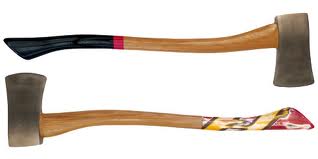

66. Chop Em Up: Choose a very long word in the TL. Challenge Ss to make a many words they they know from the letters in that word. Set a reasonable time limit. Declare a winner. Let that student go out the door FIRST today. That's the reward. Now put the alphabet on the blackboard. Challenge students to ONLY use the letters in the alphabet to make new words. How many can they come up with in just five minutes? They can only one letter at a time. Once they used it, it's done.

Students say - "Hear me. I want to learn to speak the language."
- I have learned over my 35 years in the foreign language (FL) classroom that when students (Ss) are given the opportunity to express themselves, they will tell you that they are in the FL classroom to learn to speak the language. Therefore as teachers (Ts) we must focus on developing oral skills. Reading and writing generally rank quite low with students. Frequent dictations may frustrate students. There is a time for writing dictations, but not in the early learning stages. I have had students get totally frustrated with a dictation. Learning another language should be fun and exciting to a lesson in frustration. Make your classroom a fun place to be. Encourage your Ss not to be fearful of guessing and moreover not to be afraid to make errors. I learned in grad school (Yea OSU...Go Bucks!) that you will make 250,000 errors before you become "minimally proficient" in the language...so don't be afraid to make errors. Errors means you are trying, and that is good. Practice. I used to tell my students that "Errors are Lessons in Wisdom." Your most creative Ss are those who are willing to try new activities and who enjoy the learning process for developing FL skills.

I recently had a FL teacher email me and asked what percentage of time I spent in the TL in my classes. I responded with this: My goal in a beginning level class always has been to have the entire class in the TL by Christmas. The Ss are told this. I always succeeded in doing this by Thanksgiving. You, their T must be prepared to provide all the necessary tools to the Ss so that they can ask, respond and comprehend easily. Start with: I don't understand. Now, I understand. How do you say ? I don't know, and a host of others. Ask them what they want to be able to say once it all becomes in the TL. You will find that the Ss will be very cooperative as their goal is to "learn to speak the language" and you, their T, must provide the environment and an opportunity for them to do so.

Learning is a creative experience. It requires the student to connect new information or experiences with information previously learned. In general, the curriculum is more structured for the beginning student, and during the course of program, the student earns more freedom and responsibility. The goal should be to enjoy the experience.
![]()
FL teachers juggle activities daily  holding up four strings with two hands.
holding up four strings with two hands.

The Four Skills
In order to learn to speak, Ss must first develop their listening comprehension skills. An instructor attempting to teach all four skills at the same time will become frustrated as will his or her students. I liken the four skills (listening, speaking, reading and writing) to four strings on a marionette. You their T can only hold up two strings with TWO hands as the other two strings fall down. Therefore it is necessary to develop and develop well each individual skill and to focus on each using many techniques and activities to meet the learning style of every individual student. Even after all these years (I retired in 1999) I continue to wonder what might have happened if I had ONLY concentrated on listening and speaking and letting the other two go. Ever wonder that yourself? As Dept. Chair whenever younger children from another country came into our Laboratory School, I was asked the best means to teach them English. My response was always "Just Leave Them Alone." They will gradually adapt and incorporate themselves and learn the language in the presence of the other children. Was I wrong? For adults I suggested getting a French boyfriend or girlfriend or moving to France for a year. France is where I really learned French as a student. Actually it was at the Sorbonne for an academic year where I earned my MA. My two children, aged 5 and 3, became fluent in French as well as I enrolled them in the Ecole Maternelle. Their French after one year was just as good as mine.
![]()
Learning Styles
Every student in your classroom will have a mix of learning styles just as you do. Some may find that they have a dominant style of learning, with far less use of the other means. Some will have different styles in different circumstances. There is no right mix. Nor should your teaching styles be fixed. Ss can develop ability in less dominant styles, as well as further develop styles that you already use well. Perhaps you will recall in your classes that there are seven learning styles: visual, aural, verbal, physical, logical, social and solitary. You will discover that your Ss have developed learning styles that they can express to you. Their preferred learning styles will guide the way they learn a second language. So MIX IT UP.
![]()
These learning games and fun activities are "proven" winners. I have used them all frequently and with much success. One measure of your success is called a CLEP exam. Most colleges and universities have exams that grant credit to Ss who have developed a certain level of expertise prior to coming to their school. Most of our French students gained 15 hrs. of college credit before they even stepped on campus. That was equivalent to a whole semester of studies. So onward. First of all,THESE ACTITITIES ARE FUN. Students enjoy fun activities. You will too. When are asked what their favorite subject is in school I can assure you that they most often will come up with their favorite teacher as their favorite subject. It just makes sense doesn't it? Keep your focus on enjoying your Ss and having fun in your classroom and most of all keep it in the target language (TL). Provide activities that are fun and that develop good language skills. I always enjoyed trying new activities that got students on their feet and that - kept them guessing - and always in the TL. My philosophy was that anything that I am doing that students can do, let them do it. Asking questions, giving instructions, reading paragraphs, virtually anything.
![]()
Enough advice. Now for some activities that "work!" As you work your way through this list, do send back to me your suggestions at the bottom of the screen so that I can add them to this list. They are not in any order. They are listed off the top of my head and from memory that goes back "a few years." Just remember to "keep 'em guessing." That's the key to the success of most of these fun activities. The idea came to me via Dr. Elizabeth Joiner of South Carolina. It was her original idea. We all gained a great Foreign Language Education background at Ohio State with Ed Allen and Gil Jarvis. GO BUCKS!
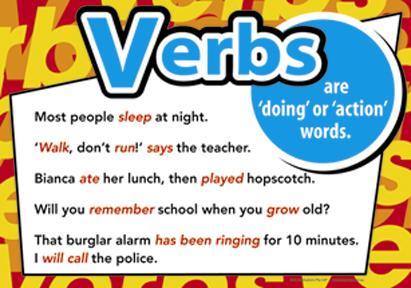

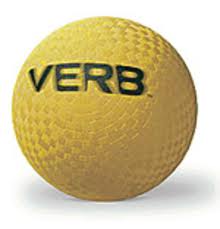
My verb list: Challenge Ss to make a list of all the verbs they know to date at their desks. Five minute limit. Have them number they 1 2 3 etc. so that they will know how many they have made and to save time. Have two or three Ss write their list on the board. Now have other Ss add to the list their verbs that not on that list. Good practice. This works best only for the first two years of the TL.







Learn words, phrases and expressions in 40 Languages for FREE Have fun hearing and repeating common words and phrases in a whole bunch of different languages. Use these with your students. Teach them how to count to five in Japanese, Italian, German, Russian, French, Spanish, Portuguese and dozens more.


![]()
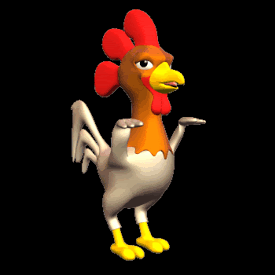
Do the Chicken Dance with your students.
Do you know the words? They probably do.



Those were really enjoyable.We love our language class.
![]()




PhD-ABD, The Ohio State University (Foreign Language Education).




-



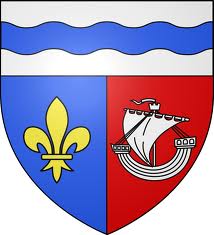



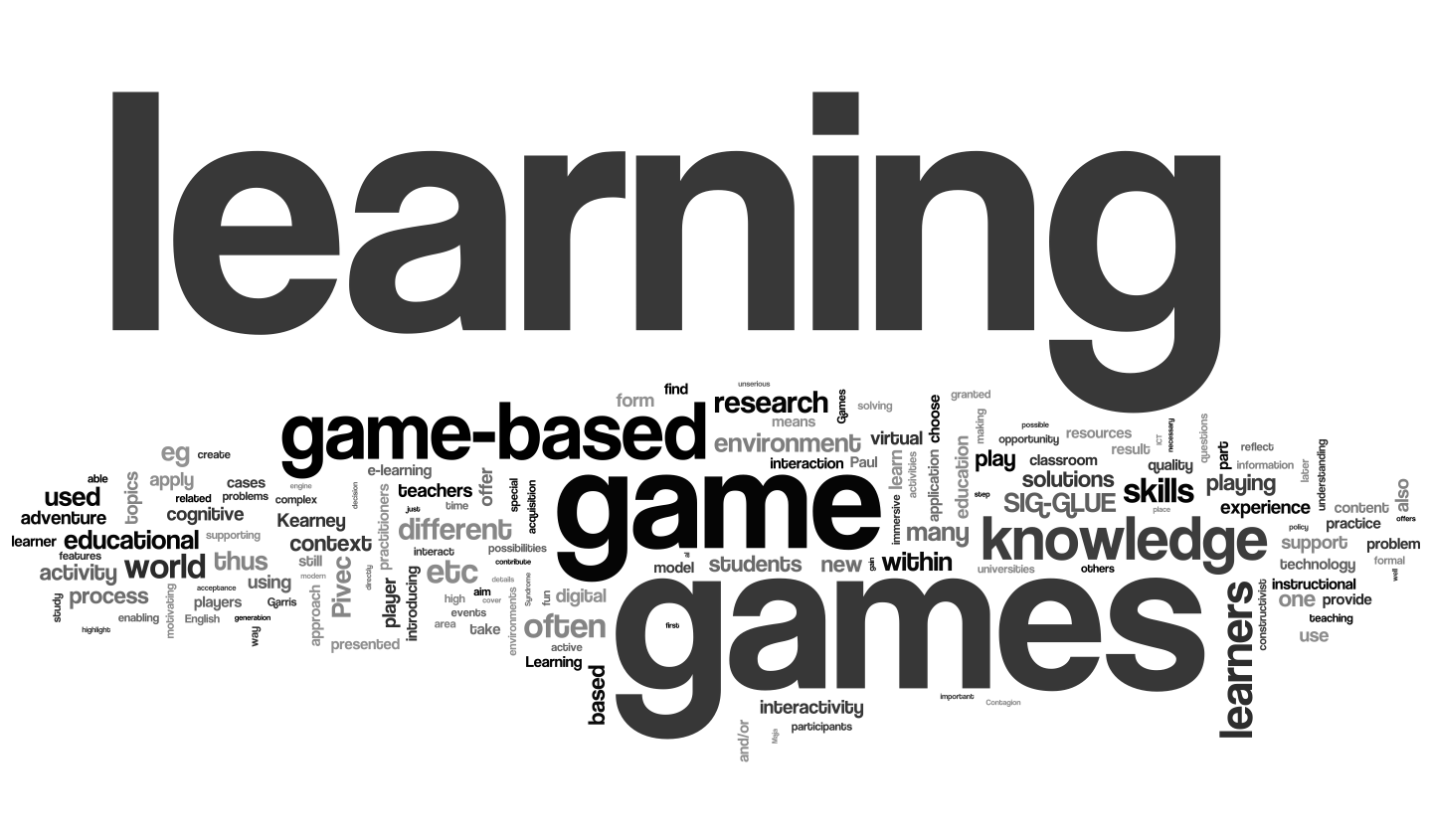
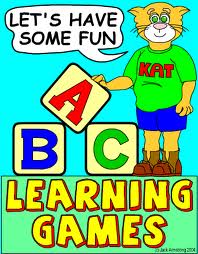





Teachers: You are what you leave behind.




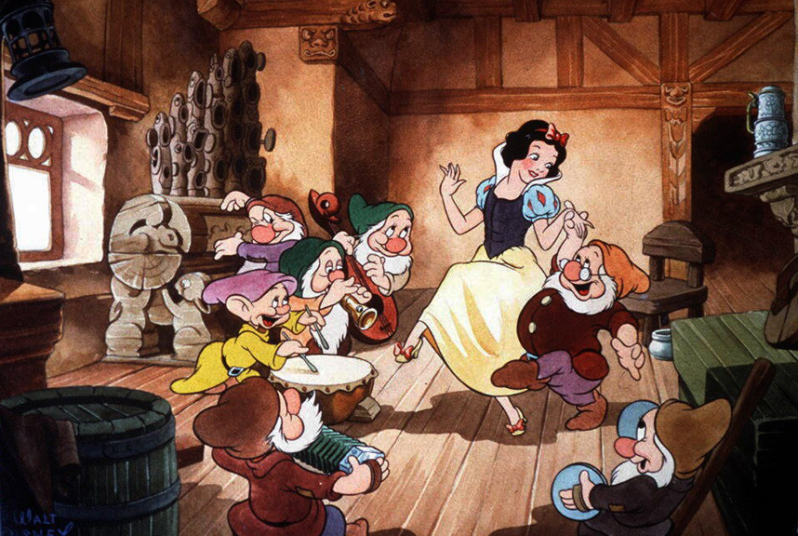
Read fairy tales aloud in the language you teach.
Students on most all levels will comprehend.



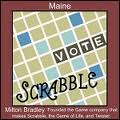
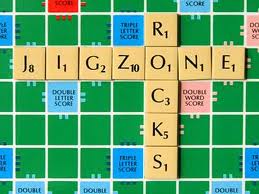
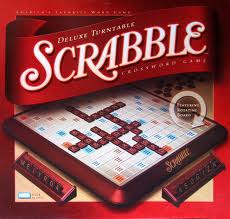

68. First names: Now make a list of as many first names of people in the TL. You might even try doing last names if they have seen them already or you write them no the board as Ss say them. Most First Year texts have lists of names. Same circle: S1 gives a name. S2 repeats that name adds one more. S3 continues until a S can not remember all the names. Then have the entire class come up with the list to date. FUN! We like to have fun learning another language, remember?

70. Add a word: Give the students a word such as PENCIL. They then must come up with a new word that starts with the last letter of the word (L). L = letter R = red D = Dog, etc. Set a time limit again and see who has the longest list. Have several Ss put their list on the board for all to see. This becomes very creative. Some Ss do well, other get a little frustrated, but such is life. Now to the same with the First Letter. ex. cat = car c = candy c = corn. etc. You can do this with any word, just don't use X Y or Z.

71. Crossword Puzzles: Have students make up their own crossword puzzles and trade with another S in class. They can do this in English but the words must be in the TL. For late second year and beyond do it all in the TL. Here's a site that let's you create your own puzzles for your own classroom. Share that URL with Ss and let them make some at home. Make copies. Share with Ss. There are websites that can produce crossword puzzles online and in the TL.





72. Guess Who: Describe another teacher in school. The Ss guess who it is. You describe a S in your classroom The Ss guess who it is. Now have a S do the same. Now play WHO AM I - WHAT AM I? Describe a person or thing and the Ss must guess the answer. Ex. I invented the light bulb. I am between the US and Europe. I played the role of a pilot in TOP GUN. I am the president of Russia. I first climbed Mt. Everest. I can fly through the air and can be blue, red, white, red or other colors and I sing. I take one of these to travel from NYC to LA. I was Dean Martin's partner. The list is endless. In the more advanced classes have the Ss make up the Qs. Have fun.

73. Prepositions: Make a nice long list of the most used prepositions in the TL. Ss are to make short sentences at their desk using each one. Then go around the room and listen to each preposition and how it was used. A simple but highly useful activity. Challenge Ss to memorize prepositions. See how many they can say orally or can write on the board.


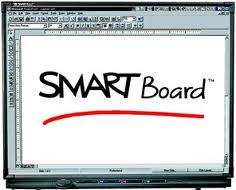

74. A Smartboard: Do you know what a Smartboard is? If not GOOGLE Smartboard. I used one this summer for an enrichment course for students in grades 5-8. It was wonderful. I could use all my games and instructional activities on each of language websites at:
This is well worth checking out. It can be a great addition to any FL classroom.

75. Add a Verb: Your TL is only as good as your ability to uses verbs and use them correctly. A good solid review is necessary on every level of instruction. By the end of the third year of study Ss should have been introduced to all the major verb uses and be able to use them in sentences and understand them in spoken sentence. Make that as a challenge to yourself as their instructor and continually work to master each verb on each level of instruction. Maybe have a list of new verbs on the blackboard and add one a day. Caution: Don't use esoteric ones. Choose high frequency verbs that the Ss need to learn and use correctly. Have Ss use the new verb in a sentence or two.




76. The Verb TO BE: TO BE is always the first verb to be introduced and to master along with TO HAVE. Challenge your beginning Ss to make as many oral sentences that they can using I am. and I have. Go around the class (circle up) making up simple sentences. Ss who hear their classmates use the sentence will often remember it better that you as a T giving it. I am American. I am tall. I am short. I am sick etc. Of course I am hungry and thirsty don't work and they will find that out very soon when they use it incorrectly. I have is almost unlimited. I have a sister. I have a dog. I have a test tomorrow. I have. Now use it in the negative for both verbs. This is for level one only. You can use the same verbs in the future, past, imperfect etc. on the upper levels.






77. Family Photos: Ss each bring a family photo to class and tell the class about their family. This can be simply or much more detailed according to a S's fluency. You can have them tell specific things about their mother or father or other members of the family. What they are like, what they like to do, their favorite food items, how they spend their free time and so on. Place five full page photos you have ripped from a magazine and tape them on the black board in a row and number them. Now describe one of them and ask --- Did I describe 1? 2? 3? 4? or 5? Ss raise their hands accordingly.

78. Build a Face: You draw an outline of a head on the board. Call for a volunteer. That S then is told by other Ss in the TL to draw the eyes. Then the ears. Then the hair, a nose, a chin, eyebrows and so forth. Then a body is gradually added. Arms, legs, fingers, etc. Great means to review the body parts. Play Simon Says again (see above). Have Ss bring a body part that they have drawn, colored and only one part. Now see if a full body can be taped on the board using only then parts Ss bring to class. Ask that the parts be six inches long or wide. Have a S tape up their part to the body.

79. Whatz happening?: Each S brings a large photo from a magazine to class and describe the photo to the class. The class then asks questions about the photo. Remember that each time a S is in front of the class and questions are being asked of that S that they be seated on a large stool. A S brings in a headline from the local paper and describes to the class what is going on.

80. Opposites: When Ss are capable have them write a long list of opposites such as yes/no up/down dirty/clean inside/outside to enter/to leave to raise/to lower, in front of/behind, white/black, etc. Now pair off. They then ask their partner to give the opposite of a word on their list. Then trade partners.



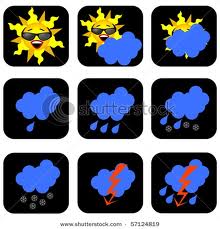
81. The Weather: T says - I am thinking of a weather term. What is it? Ss guess. Is it raining? Is it cloudy? Is it snowing? Is it hot? Is it cold? Is it windy? etc. They play in pairs. This can be done with just about any vocabulary list. Food, verbs, numbers, colors you name it. Now a S acts out a weather expression. The class guesses. Another S draws on the board a weather expression. The class guesses. Now one S has a weather expression in mind. Go around the room and have individual Ss guess what s/he is thinking. It's better if they write it down so that it does not magically change.

82. Everybody on your feet: Clear out the desks to one side. All students are grouped in the middle of the room. They are asked to make choices. If they like something, did something, saw something last night, do you like ice cream, do you know someone named John, is PE your favorite class, went to a particular city (the list can do on forever). IF they are in agreement or respond positively, they move to the right, if not they move to the left. No one is to be left standing in the middle of the room. Either they did it or they did not. Great way to get the circulation going for an early AM class or after lunch when Ss can be a little lethargic.



84. When I was little: Good for the imperfect. When I was little I used to - list five things you used to do. Each S shares with the class. Now list five things you were not able to do when you were little.

85. Some day I'd like to --: List five things that you would like to do someday. Someday I'd like to go visit Tokyo. I would like to see Canada. I would like to ride in an airplane. Skydive. Ss share with the class.

86. Combining the pluperfect with the past conditional: If I had done my homework, I would have gotten an A. If I had answered that last question, I would have known how to respond. If I had not been watching TV, I would have seen the eclipse of the moon. If I had done my chores, dad would have given me some money. Ss write down five sentences for homework for tomorrow. Put up this list and correct it. Hand it back the next day with corrections. Ss say their sentences to the rest of the class the The T gives many examples so that Ss know how to use them correctly.


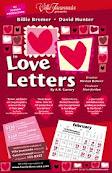

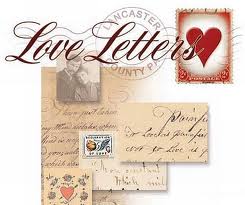
87. Love letters: Each S writes a love letter to an imaginary boy/girl friend. In the letter tell why you love him/her so much and write about yourself and what you love to do and where you love to go and just why you are a little crazy about him or her. Write at least five things you like. These can be a little "slurpy" as well.

88. Dear Santa: Around Christmas time have students write a letter to Santa. They are to tell what they would like for Christmas and why they deserve these gifts. It is not a bad idea to ask Ss to come up with ten or fifteen lines of the TL in this letter. Otherwise they will quit with just a few. Ask for volunteer Ss to read their letter aloud. IT is also fun to have a S dress up like Santa. Ss come up and sit by Santa and tell him what they want for Christmas. Santa asks them questions back.







90. Composition Time: Writing is the last of the four skills to be well developed in TL classes. It is the toughest. Use lots of easy drills to begin and make them more sophisticated as you progress. Never - Never just give an assignment and say - "Tomorrow write something about ---". Give Very Specific Directions. Directions might even be handed out on a short sheet with specifics or written on the board in detail.

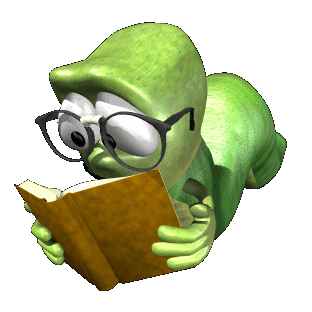
91. Reading Aloud: Use reading materials from the textbook, workbook or something you have prepared. Go around the room as each S reads one sentence then the next S continues. This is a great means to note what needs to be worked on for improving reading skills, pronunciation and intonation. Do stress proper intonation.

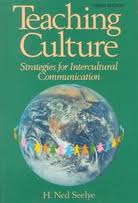

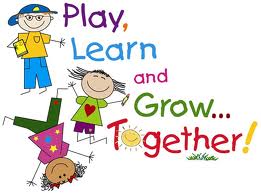

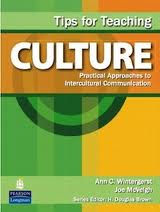

93. Reaching Professional Status: Join your national association of teachers of the language (AATS) you teach plus ACTFL. The journals that come with membership are well done and useful for ideas and as a means of "keeping up with the profession."


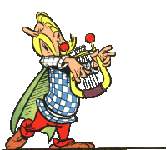
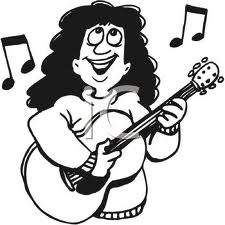

95. Hit Parade in the TL Country: Today's Ss like popular songs. Find songs of the most popular singers in your TL. You can always do this online. Write the name(s) on the board and keep a list handy. Play maybe three in a row and have Ss select the one they like best.

96. Movies: Movies are tough to follow for HS Ss. Subtitled movies work best. It is a great means for students to see the words that they hear. Try to find movies that have subtitles in English and the TL as well. I like both. English to the TL seem to work best, at least it did for me.

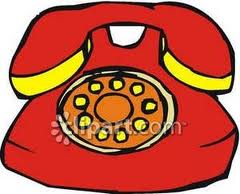

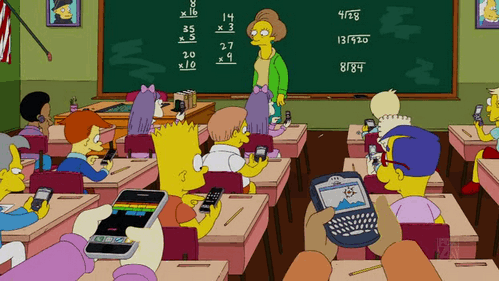
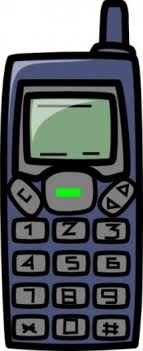



98. Board Games: There are many board games that Ss enjoy playing. Ask your Ss to bring them to class and play games in the TL. Rule Number One: IN THE TL! Monopoly, checkers, scrabble are good examples, but remember in order to play you have to keep the game in the TL. No cheating! FUN.

99. TL Names for each S: By now all your Ss should have names from the country/language you teach. Most often you can match the name like Mary is Marie, John is Johann, Peter might be Pedro, etc. If not give the S a choice of several as there are always a few that have no matching name like Kim, Jason, and Throckmorton.

100. Guessing ages: Ss are to guess your age. Simply point up or down with a finger for higher or lower. Now have them guess the age of your spouse, your mother, your father, the principal in your school (go ask first), the coach, your dog, etc. Guess the year my mother was born. That's tougher. The year that you graduated from college.

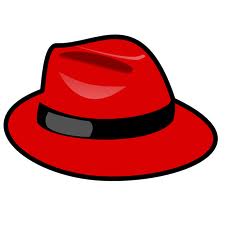
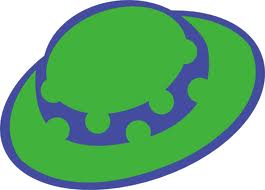

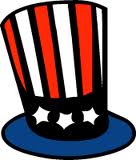
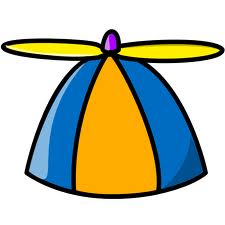

Variation #1: Its Christmas time. One S is Santa with a nice hat on his/her head. A S sits next to Santa and tells they want for Christmas. Santa asks questions.
Variation #2: Ss make a long list of gifts in the TL that many children want for Christmas. Use a dictionary if necessary. Place this list on

102. In Strips - Type a series of commands on a sheet of typing paper (a dozen or so). Cut each into a strip. Have Ss pick one out of your hand. Commands such as: Turn off the lights. Open the window. Say Hello to Mr. Becker. Shake Mr. Becker's hand. Give (name a S) your book. Count backwards from 10. Open your mouth. Touch your nose. Sing Frére Jacques. Etc. Make them fun. Ss are NOT to read them, just DO THEM. You can do one at a time or go around the room. Now mix them up again and do it again with different Ss. FUN.
Variation #1: Now ask what the S did (note the past tense now) to the entire class and / or what you say in order to do this command (what was written on the strip).



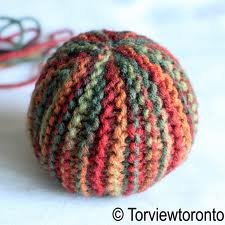
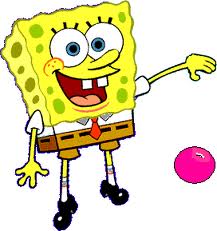
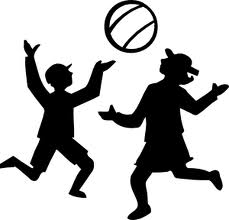
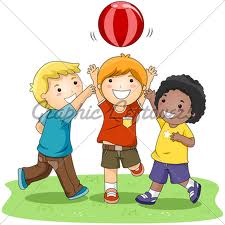
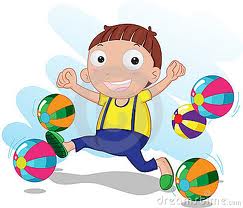
Variation #1: Instead of tossing the ball gently to another S, simply pass it on to the next S who must respond. If they can not, they say, I don't know in the TL and pass/toss it on. Then count to 100 by passing the ball rapidly around the room. For advanced classes, count backwards from 100. That's pretty tough but it can be done albeit slowly.
Variation #2: Ss close their eyes. No cheating please. Bounce a basketball or hard ball in front of the class. Ss must tell you how many times you bounced it counting by five, then by tens, then by twenties, then by hundreds all in the TL.

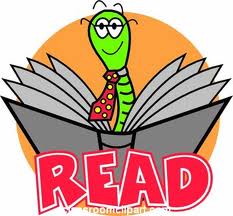
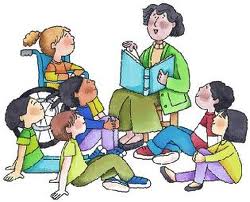
Variation #1: Now have your Ss make up their own story complete with colored pictures they have drawn themselves (No clipping from magazines!). They write the story in the TL then pass their stories around the classroom letting everyone read what they have written. Make little booklets with the stories and staple them together. Hang them on the bulletin board outside the classroom for everyone to see. Have a nice cover with a color illustration and their name on the cover. FUN.
Variation #2: In your more advanced classes let the Ss take your place reading a well-known story in your language and then turning the story into the TL. Be sure to find a book with pictures that will help clarify meaning. FUN.

105. Which is true and which is not? In the TL make statements like -- The Capital of California is LA. Ss say FALSE in the TL. A cow is larger than an elephant. FALSE. The colors of the American flag are red, white and blue. TRUE. Chicago is larger than Pinkyville, Ohio. Pigs can climb trees. Snow is black. The principal's name is Mr. Spnorfknuckle. Birds can not fly. Fish like to swim. You buy meat in a bakery. On and on and on with some real whoppers. When they are capable, assign Ss to bring in their own lists and they take your place on the stool. I liked to use True-False statements about our own city. The name of the cinema is --, Our post-office is found on --- street, We have three gas stations in our town, etc. This make the language come alive. Let Ss do the same in front of the classroom with their own list that they make up that are True or False. Ask Ss to raise their R hand if it is true and the L hand if it is false. Fun. Fun.

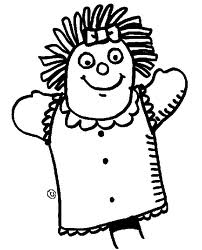

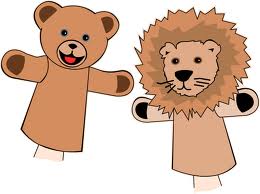

106. Puppets in the Classroom: Hang up a sheet at the front of the classroom and cut a rectangular hole out the center so that you have a stage setting. If there is no room, just have two Ss hang on to the sheet. Ss bring puppets to the classroom and role play. You can even use dialogues directly from your text and make them come alive. If you have to you can have two Ss hold up the sheet while the presentation is taking place. Ss often have puppets that their little brother and sisters play with at home. I have known teachers who have a permanent "theater" in the classroom just for puppet shows. We made puppets out of brown paper bags. Draw faces on them. We also just used our thumbs with little eyes on them and a nose and mouth. These were really fun too. Ss sit next to each other have a conversation in the TL using just their moving thumbs.
107. Whatzin The Bag? - Place a whole bunch of plastic toy figures into a paper grocery bag. Looking down into the bag and describe one of them giving all the characteristics you can think of and ask the SS to raise their hand when they think they know what it is. Come up with some number say FIVE and when five hands are up, ask one of the Ss what you described. If it correct pull it out of the bag and show it to the class. It can be a toy car, a horse, an banana, a basketball - anything. Ask a Ss to bring a bunch of them to class if they have a little brother or sister who has a great collection. Be sure to return them all later. For more advanced classes, have a S take your place in describing the item. FUN. A great way to make FL meaningful (for more advanced classes). FUN.
Variation #1: Now draw two eyes and a mouth on your thumbs and have the Ss wiggle them back and forth as they speak the TL back and forth in pairs. You can also use paper bags or have your Ss make happy faces on an old white sock. Paste eyes on the sock. Let Ss make their own puppets and bring them to class. Some may have some really nice ones that their little brothers or sisters enjoy. Now make a little hat that fits on their thumbs or decorate a female with a necklace, eyelashes and so forth. Have Ss pair up and "talk" using just their thumbs. Perhaps make a tiny stage like a shoe box and put on a puppet show.All great FUN!


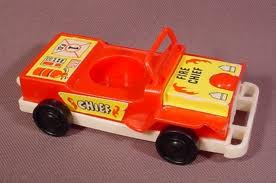
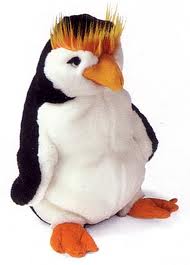
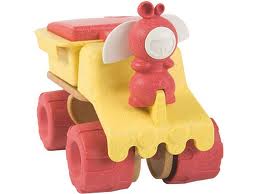


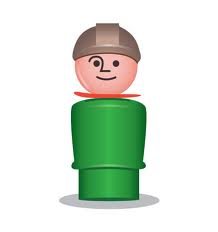
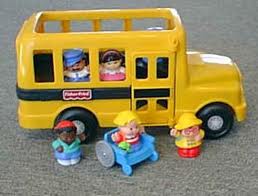
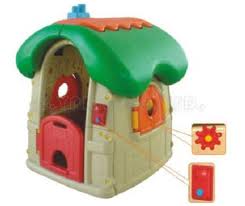
Variation #1: Come in tomorrow with one of those plastic toys in your pocket. Let the class guess which one it is. Let a S choose one secretly, put it in a pocket and let the class guess what it is.
Variation #2: Now blindfold a S and hand them one of these plastic toys. They must identify it by touch. If they can not, the class gives hints in the TL.

108. Whatzin The News? - Ss are to clip out a news article from the local newspaper and share it with the class. This can be the FB game from last night or a BB score, a local tragedy, the weather forecast, almost anything.
Variation #1: The class enhances the story adding their own thoughts and observations on the article. Place the article on your bulletin board and add to it.
Variation #2: Ss write articles on events that are happening in the school. This can be about a basketball game, a dance, homecoming, an accident on main street, someone in the school won something - anything as long as it is in the TL. Place all these in the hallway outside of your door. Great for attracting attention from the student body. Include photos if possible. Be sure to have your Ss sign their names on the article.

109. Record your Ss voices - Ss enjoy hearing themselves on tape. Record the various skits and role-playing that you do in class and play it back for the entire class to hear.
Variation #1: Encourage your Ss to phone each other and to record their conversations to share with the class all in the TLs FUN.







110. Text Me, Okay? This one should be very easy as it is a natural. Encourage your Ss to send text messages in the TL to each other via their phones.
Variation #1: Encourage your Ss to speak to each other on their cell phones all in the TL. FUN.




Variation #1: Pair up. One S1 has their back away from the board. S2 acts out the sentence to their partner. You can put these all on an overhead so you are prepared ahead of time. Simply uncover the sentence as you progress downward. Have a race. Ss are to jump up from their seats when the guess the right sentence. You will find that they will want to do this again and again. Later use past tense and future tense sentences.

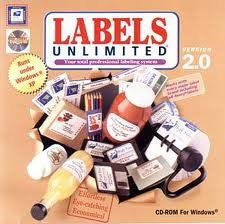


112. Labeling pictures. Ss are to find large one page color magazine pictures that have lots of activity taking place. They are to label in the TL as many vocabulary items as they can. They are to cut small arrows out of white paper and put the word on the label pointing at the vocabulary item. Now post all the pictures on your bulletin board in the hallway. Be sure that the students put their names on each picture. Good PR. FUN.


|
eg. cat, dog, truck, trees, leaf, tire, door, window,
ground, wood, fence, old, light, tub, wood - etc.

I enjoyed creating each of these once more and hope that they will excite your students. Many of these bring back fond memories as my students would jump up and down and were sincerely excited playing language games or taking part in the various learning types of activities outlined on this website. Do aim to make your classroom a FUN place. When I ask Ss of all ages what their favorite class is/was at school, inevitably it is associated with their favorite teacher. It was my intent that you have found these activities helpful and that your students will enjoy them as well. I ask that you send me to my email address below additional activities that WORK for you in your own classroom(s) and I will add them to this listing along with your name and school (with your permission of course). Note activity No. 30 from Debra Welch. That's a good example.


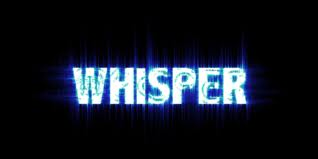

114. Play telephone. You (the Teacher) whisper a short phrase in the TL into the ear of S1. Keep it simple like I like to eat apples. S1 then whispers that same phrase into the ear of S2 next door then S2 to S3 and around the room in a circle. You will be totally amazed at what happens to your simple phrase by the time it passes around the room. Again, keep the sentence simple with a subject, verb and object. Later on you can add adjectives, verb tenses, etc. with longer sentences. See just how long of a sentence makes it around the room correctly. FUN.

115. Reading comprehension Compose a long paragraph in the TL with vocabulary that the Ss already know. Just make it up. It might be about your school, your community or even about yourself. Now write a series of questions about that paragraph in your native language. Hand the accompanying questions out to each S. Keep them fairly simple but ones that will absolutely require that the S has understood what the paragraph is all about. Give them an allotted time to complete the answers. Pick them up after you quiz the Ss orally on its content. This will give you an idea of how your Ss are progressing in developing their reading comprehension skills. In more advanced classes use more complex grammar, verb tenses and abstract thought. Now ask the questions again orally about the paragraph. VARIATION: Read a paragraph and ask questions immediately about what you just read. This of course deals with oral comprehension. Have Ss raise their right hand is they understood the question then their left hand of they know the answer (or have them stand if they enjoy that kind of activity if they can answer your question or see who can stand up the quickest).

116. So What's My Line? It's pantomime time which means the art or technique of conveying emotions, actions, feelings, etc., by gestures without speech. Ss are go guess what you are doing. For instance you pretend to be reading a BOOK. Point at your book. They guess A BOOK. Now you are writing with a PENCIL. Hold it up in the air. They guess PENCIL. Use high frequency vocabulary words. Use words that everyone knows from your book or words that have been used a great deal in your classroom. Now you the T act out in pantomime: Hat. Hand. TV. Salt. Toothbrush. Banana. Apple. Airplane. Telephone. Do this quickly. Now have a short list on a sheet of paper that you give to a S volunteer who does the same thing. This can also be done with VERBS. Again, they must be high frequency verbs. To wash. To dance. To swim. To brush your teeth. To run. To eat. To see. To speak. Etc. Tomorrow let your Ss come up with their own lists and act them out for the class. For more advanced classes you can use occupations, adjectives and less used vocabulary words. Always FUN and that's the object.

117. Your turn now --Ss line up in two lines at the blackboard. They are to add one more word to a sentence that makes good sense. You give the first word for instance TOMORROW. S1 writes "tomorrow" on the board and hands the chalk the S2 who adds a word like "we" and it continues. Have a stopwatch and time for one minute to see which team wins. This is fun at it requires Ss to be creative and to think ahead. Look for errors in grammar, spelling, sentence formation. FUN
119

118. So who am I? --A student is to role play a famous person. It can be a singer, an actor or actress, a famous historian, a teacher in your school, an athlete, anyone they would like. They are to start talking about themselves in the TL. Don't give it away in the first sentence but provide lots of hints. Ss raise their hands when they think they know who it is but they are NOT to say a word. When you can count maybe five hands in the air, call for the answer.

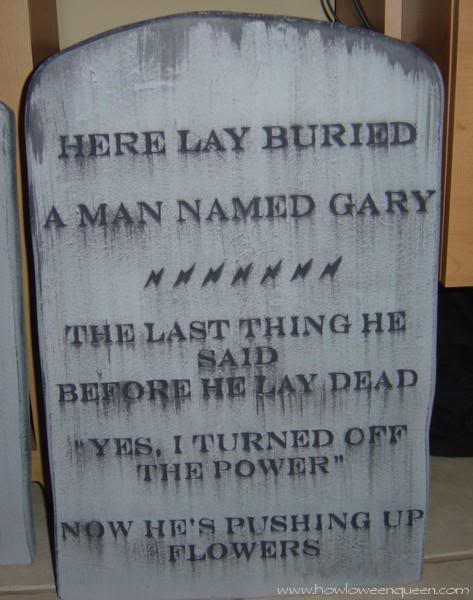


119. Your own obituary--Sounds a little weird but it works well. Ss are to design a tombstone and fill it in with information about themselves. In addition they are to write a short eulogy of their life to accompany the assignment. All the drawings can be displayed on the bulletin board in the classroom.




120. Yes/No You can get a lot of mileage out of simple questions that are answered by Yes or No. Is it Monday? No, it's Wednesday. Is your name John? No, it's Steven. Do you like carrots? Yes, I like carrots. Anything really. Do ask for more that a simply Yes or No. Ss must come up with a good response. Maybe, No, I hate carrots. Is it raining? No, it's snowing. The possibilities are endless. It is an excellent means for increasing listening comprehension and S participation. Maybe ask the question and have Ss raise their hands for a response. I would wait for maybe three or four hands to go up before I asked a particular S for a response. Make a written list of questions in your hand so you can keep it moving along. Keep up a good pace. Just thought of another idea. Have your Ss simply put their thumb up or down for Yes or No responses. See what happens. Everyone gets involved that way and the shy Ss participate as well. Have lots of fun.

121. Stand up You make a statement. If the S agrees s/he stands up. Example: Coke is better than Pepsi. Cake is better than ice cream. Red is prettier than Blue. The Packers are better than the Bears. Rain is better than snow. Etc. Now have the Ss make up similar statements that they present to their classmates. This can get pretty creative.
Now try this: If you agree, touch your nose. If you agree jump up. If you agree open your mouth wide. If you agree touch your ears. Touch your hair. Touch your feet and on and on. Say I love you in the TL. Raise both hands. Now have a S be the teacher and continue. FUN

122. Chalk It Up--Pair up two students with chalk in their hand. You hand each a slip a paper with something for them to draw. The Ss shout out what it is/was and decide the winner. Now ask for a volunteer to take on the "new champ." Another word, another drawing. Keep it simple like a bicycle. a cat, a house, a car, a tree - words that they already know.

123. You are IT--Let's see how creative your students can be by having them ACT OUT a variety of vocabulary words. Nouns will work best to begin with. They maybe go to verbs. A S pretends to be A BOOK / A CHICKEN / A ELEPHANT / A DESK / AN AIRPLANE / A CAR / Ss guess the word. Make up some really tough ones and see what happens. Better yet, let your Ss come up with their own words.

124. Fun with numbers - First of all Ss must know their numbers between one and ten. Write a number on the board. Let's say 9. What two number make 9? There are lots of them. The ideas is the the SS must USE those numbers orally. 6 and 3 / 5 and 4/ 8 and 1/ etc. You can write the combinations on the board so that they can see what they are saying. Now one to twenty. The combinations here are great with lots of oral use of numbers. Get the idea? I just used it in class recently and it worked very well. - jeb -
A VARIATION::: Pair up Ss. One guesses what number their partner is thinking of. The partner simply puts a finger UP or DOWN for the number. Use ONE through TWENTY. Later on use 1 to 100. Another tougher one, depending on the size of your class is to have a S give a number. The student next to him or her repeats that number and gives one more. S #3 repeats the first two numbers and adds one more. Keep going. Sooner or later it will run out. You can do the same with fruits, vegetables, colors, verbs, just about anything. Put a S on a stool or in a chair at the front of the room. The class is to ask questions of that S. What time is it? S1 has a time in mind and the class guesses. What color? What animal. What room in the house. What article of clothing. Use complete sentences, NOT just words. Are you thinking of 1:00? 2:30? A quarter to six? Etc. Is the color Blue? White? Yellow? Etc. Now you come up with a few more yourself.

125. Get out your colored pencils -
You assign your Ss to write on a sheet of paper all the verbs they know in the target language. They are to be in disarray, that is not in order, just everywhere on the page and in various sizes. They are to tape their sheet to the classroom wall or on the wall outside the classroom in the hallway with their name at the bottom of the sheet in a little box. Now for tomorrow. They are to draw a body and label it with all the parts they can find or that they know or have learned. Yes, a dictionary is fine. Tape them up. Now, they are to draw a house and label all the parts. Encourage the use of color pencils on their drawings. Keep on going with various categories. Countries, colors, languages, animals, occupations, cities in a the country you are studying, various languages, relatives, you name it as this list goes on and on. Have fun. - jeb -

126. Now draw what I say - Have your students pair up. One student will tell the other what to draw with details. ie. - Draw a bridge with a cow on the bridge. Next to the cow draw a truck with a cat sitting in the back. Behind the truck there is a bird. The bird has a feather in his beak. Next to the bird draw a dog. The dog has a book in his mouth. In front of the truck there is a horse with a man on his back. The man has a tall hat on his head. Etc. One could even have 1S have a photo of something and then tell 2S to draw with is on the photo taken from a magazine. Try different things. The whole ideas is that one S is able to make contact with another and understands what is said.

127. What is this word? - Each S is to make up a dozen words that are mixed up letters. They are to draw a box around each letter and put them into a row. Start off with just three letters (words) that are always mixed up like the kind you see in newspapers. These are on one sheet of paper and placed in a box. Each S is to draw a sheet out and figure out the word from the three letters. For instance: T O H would be HOT. O Y B would be BOY. Three letters are easy but then go on to Four the next day and then Five. Five might be the limit. The S who made up the list is to have the answers on their own sheet in case another S is unable to figure out the word(s). Got it? Hope that is clean for you. Fun and easy.

128. Pass it on - The class is in a circle. You the teacher whisper a short sentence into the ear of S#1. S#1 whispers that same sentence to S#2. This goes around the room. You will be amazed as what happens to a short sentence after getting passed around the room. Keep it fairly easy like: The boy likes to eat pizza in the morning. OR She speaks English but does not speak Spanish. OR I like to eat in a good restaurant. It can go on endless, but YOU the teacher start it off. The last S will say the sentence aloud to the class. FUN.

129. It's time for a class TREASURE HUNT. Hide clues in various places using prepositions to find the next clue. I liked this idea. Hope you do too.

130. How good at you are acting out a word?TREASURE HUNT. You hand a S a slip of paper with a vocabulary word on it. S/He must act out the word so that the class can guess what it is. i.e. - you are a bird - you are a butterfly - you are a dog - you are a cow - you are a cat - just about anything that can be acted out. Use nouns, not verbs, adjectives, etc. .

131. Composition in the Future tense Ask your student to write a composition about how their life will look in the future. What they see themselves doing, where they will be living, who their friends will be, will they have a family, etc. A good assignment.

132. Using the imperfect with the conditional Students are to complete this statement: If I had 100 dollars, I would buy _________. (use the currency unit in your country) Then, substitute money for objects like - If I had a car, I would ___________. If I had a boat, I would _________. If I had a bicycle, I would _________. Etc.

133. Having fun with chalk. A student goes to the blackboard and draws a figure. The rest of the class guesses what it is. Keep it simple. A book. A tree. A car. A bird. A pencil. Etc.

134. Who is there? A student sits back to back with another student. It is as if there is a door between them. The goal is ten questions. Have a S keep track of how many questions are asked: S1 starts asking questions that he knows to be true of S2. Simple ones like what is your name. How old are you? Where do you live. What is the name of your mother? What is the name of our teacher? Do you speak English? Do you speak (name another language)? Do you have a brother? Do you have a sister? What is your favorite subject? What is my name? Do I have a sister or a brother? How many students are in this class? Etc. Got the idea? This is fun. You can actually divide the class up into pairs and let everyone go at it at the same time. Do the first one as a demonstration so that everyone knows what to do. Have he person asking the question, mark down the number of questions asked. After ten. S1 can say Yes, you are name of S. Come on in.

135. Don't make me laugh A student sits in front of the classroom. The object is to make that student laugh. The object is NOT TO LAUGH. Your Ss ask silly questions of that S such as: Why is your hair pink today? Do you like to eat glass? What is your boyfriend/girlfriend's name? Do you have a cat in your pocket? Is your sisters name Duck? Etc. For every question, the response is always BANANA until he or she laughs. Then they are DONE. Sometimes they start laughing even before the first question. That is a NO NO. The object is NOT to laugh for five questions. Be sure to count the questions. They can not even make a face, snicker or gesture. It has to be a totally serious face. Have fun with this one. They Ss love it.

136. Add a word Students are asked to put together a series of words starting off with one letter, then two, then three, and so forth. See how far they can go in the target language. Like: a, bee, cats, dodge, etc. It is a good activity. Have them then write their words on the blackboard. The winner get a sucker stick, an M &M or some reward. Enjoy.

137. WE QUESTION EACH OTHER. Pair up your students. They are to start asking each other a question. I can be almost anything like what time is it, what is your name, how old are you, do you like hotdogs, do you like bananas, what day is tomorrow, what is the name of our teacher, do you know to swim, etc. This can go on for quite some time. If a question is asked that is off base that a S does not want to answer as it may be TOO PERSONAL, the response is always a loud BEEP BEEP response and different question is asked. After this goes on for maybe five minutes, Ss exchange partners. This is fun as it also helps your students get used to asking a variety questions. This can also take place in the front of the room with a student in a chair or sitting on a stool and the entire class asks questions one at a time. Ss are to raise their hands if they have a question and the S in the front of the class simply nods their head to acknowledge the hand in the air. Try it. It works! I have done it dozens of time. Give it a shot. Enjoy.

138. PASSWORD You provide a list of maybe ten words to a S. That S must give hints to another S as to what the word is. For instance. A BOOK. S1 can pretend to be holding a book and flipping through the pages. S2 says A Book. Go on. Keep the words easy like milk, bread, TV, radio, nose, automobile, airplane, etc. This should go quite rapidly. Now pair up your Ss and provide them with word lists that you have put together. You can trade off those lists after a pair of Ss has use them. This is a little difficult for first years Ss, but it can work. Level II and III works fine. Again, keep the word list high frequency words. Try it.

139. Say three things about yourself Students are asked to say three things about themselves that perhaps the other Ss do not know. One is true. Two are not. They are to guess the RIGHT ONE. This can be done on any level, even for Level One. The more advanced classes can use the past tense, the imperfect, etc. It is fun. Give it a try. We did this with adults at a meeting and we had lots of fun with it. Adults tend to want to write all three down so that they do not forget them. This is a great Party Game. -jeb

140. Great new listening idea for you. Teach you students to listen carefully to what is being heard. A novel idea is to read off a paragraph and to ask them to mark down every time they here the word THE in the target language. You can use a variety of words as well as THE, but that is an easy one. At the end of reading, have student give you the number they have recorded (have them make down with a slash mark for every time they hear THE). Make sure YOU know yourself how many words there are. You will find that there are lots of different responses. I would let the Ss with the correct answer leave the classroom first today. Hurrah. Another might be the word A in the target language. Those are pretty common. Now combine both and do the same thing. Have fun. -jeb

NEW: 141. This exercise can be expanded to every level of instruction. It is called SENTENCE COMPLETION. It would probably work best using an overhead projector but you can either write the exercise out on a blackboard or even have printed sheets and later totally orally. Start out by making two columns. Label the column to the left with numbers one through ten. The column on the right a, b, c - through j. You will start off with a simple sentence like- I like to eat- and STOP. In the column to the right you might write: bread. STOP. Sentence #2: She has a brother and STOP. Column to the right: and two sisters. Stop. You do not match them but rather on the RH column mix them all up. Sentence #3: I speak two languages, English STOP to the RH side: and Spanish. Get the idea? Easy. For Level One keep them simple. For level two, keep them LEVEL TWO. The more advanced levels might say- #1 If I had five hundreds dollars STOP. RH: I would buy some new clothes. LEVEL THREE- #1 I do not know if he STOP. RH. went to the store or went home. Etc. I would go ahead with this idea and then let the students come up with the possible completion of the sentence to the right. Go around the room in a circle until all the students have come up with their own rendition. Sentence for Level One- I like- the possibilities are endless here, just listen for correct answers. Level Two: Tomorrow I am going to- Level Three: Yesterday, I went to- Level Four: Use the subjunctive/ future perfect / conditional/ etc. Now try it. Should work well for you. Vary according to student abilities. Good luck. -jeb




NEW: 142. This one is called STOOL PIGEON. It takes a small stool to really do this well. Bring one from home if you have to. You ask for a volunteer. Ss love to volunteer. The S sits on the stool. Now Ss fire questions at him or her. Anything that they have learned in class. Eg. What time is it? How old are you? What is the name of our teacher? What color is your shirt? How old is Mr. Becker? That's a tough one, and so forth. That S answers 5 questions and then another S volunteers. This can go on for quite some time, but it reinforces what you have taught, what Ss can say and gives you an opportunity to note errors in pronunciation, verb use, etc. Use this activity often.




NEW: 143. This one is called DON'T MAKE ME LAUGH. Using the same stool as above, a S volunteers. The object here its to ask questions that my make the S laugh or even smile. The S MUST NOT show any signs of amusement, even a slight smile. Poker face rules. The S on the stool is to answer in short responses. Eg. Is your boyfriend/girlfriend pretty? Is your hair yellow? Is your mother's name Hillary Clinton? Did you eat a cow for breakfast? Do you speak Russian? Generally YES or NO questions work best. You will find that some Ss smile before the QUESTION is even asked. No fair. Sometimes it works well to have the S choose someone else in the class to take their place. You will discover that your Ss can come up with some rather creative questions. Ss will ask to repeat this activity again.


While this is a French movie made way back in 1956, students in every language classroom can enjoy the movie as there is "No French" spoken. 34+ minutes in length. Share it with your students regardless of the language you are teaching. They will love it.


These quizzes are related to the Transparent Language Languages of the World software program. Great site for review.![]()
Type a search phrase in your language. Google will find results in other languages and translate them for you to read.
If you have not already discovered this very useful translator site, you and your students will find it very helpful.


A great site for having fun building vocabulary in another language
This is one of my favorite sites that I used last summer with middle school students and the Smartboard.
![]()
N.B.: I have been away from the University for some time now however I feel that I can still be creative and enjoy sharing fun games and learning activities for the FL classroom with each of you. I had better be, as I have been asked to teach French again this summer to grades 5-9 as in enrichment class at the local HS. My young Ss learned over 200 vocabulary words in four weeks and were able to describe themselves and say what they wanted to learn with ease. These types of activities "turn Ss on" and make the classroom FUN. It is extremely important that you keep in mind what Ss want to be able to say in the TL that you teach. Ask them, then go about DOING IT. A the end of the course challenge your Ss to stand in front of their peers and speak the TL for as long as they can. Say all those things that they they learned.











 Our teacher tells great jokes in the language
Our teacher tells great jokes in the language 









